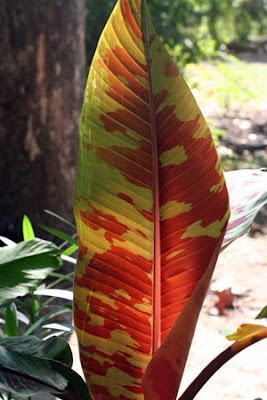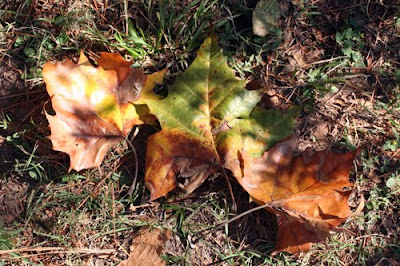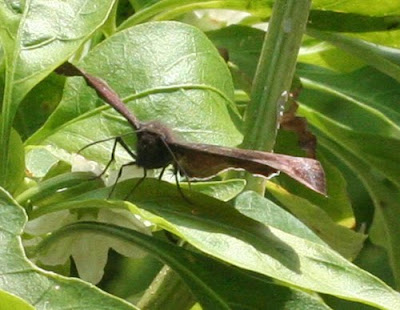But first, before we "ponder" my bloomers, let me show you my pond!

When I last showed it to you, it was just a hole in the ground. It still needs a bit of tweaking and there will eventually be a planting bed partially surrounding it and some sort of waterfall or fountain to move the water, but it is essentially complete. The plants were all in place prior to last week's frost and they survived intact. We'll see whether they survive tonight's lower temperatures. The pond also now has seven fishy residents - six tiny goldfish and one foot-long plecostamus that had outgrown my small 30 gallon aquarium. I think the pleco is much happier now.

Nearby, in my iron washpot fountain, the small alocasia did not fare as well as the pond plants in the frost. Its top leaves were nipped back, although the leaves that were closer to the water are still green. Will they still be green tomorrow?

Around the yard, most of the sages shrugged off the frost and are still blooming. We'll let this one autumn sage stand in for all of them.
Unsurprisingly, the roses, those tough old gals, are still blooming. It takes more than one light frost to discourage them.
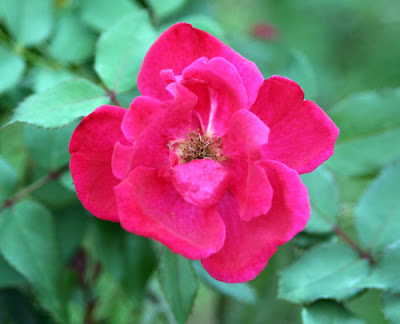
'Radazz' Knockout leads the way.
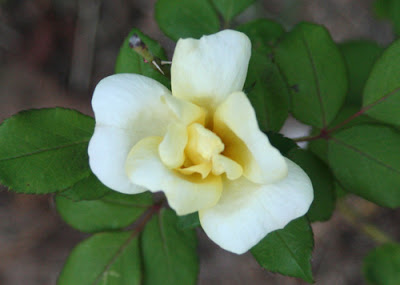
'Radsunny' yellow still has plenty of color left, too.

As have the pretty pink Knockouts.

Not to be outdone by the upstart Knockouts, the old roses, like this 'Red Cascade', continue to show their colors.

For the 'Ducher' rose, white qualifies as a color.

My sentimental favorite, the 'Caldwell Pink', is still in full bloom.

'Monkey Business' is a new floribunda, introduced this year, but it has held its own with the Knockouts and the antique roses in my garden. It is a definite keeper.

The bleeding heart clerodendrum had its upper parts nipped by last week's frost, but the lower parts of the vine are still in bloom.

Likewise, 'Big Momma' Turk's cap was bitten by the frost, but the parts that were closer to the brick wall were protected and still continue in bloom.

My hibiscus plants that were in the ground were burned by the frost, but the three that were in pots are still blooming this week. The 'Sunset Yellow' is the only one of the three that had open blossoms today.

The cigar plant cuphea is still in full bloom, although most of the customers for its nectar have now moved on.
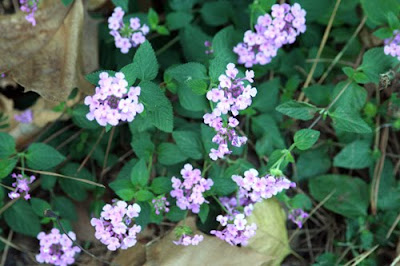
All of the lantanas were blackened by frost except for this purple trailer which seems totally unfazed by it.
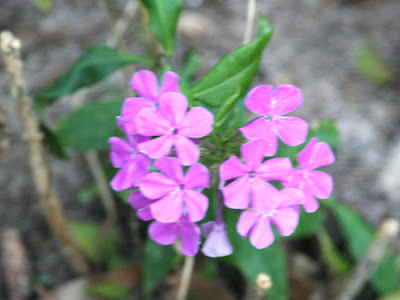
Surprizingly, the summer phlox still had a few blossoms to offer as well.

The gerberas survived the first frost. We'll see whether they make it through a second.

A few of the blooms of the Cape honeysuckle, which had just reached full bloom, escaped the frost. Will they still burn as brightly tomorrow?
The garden in settling down, withdrawing into itself and getting ready for winter. There's a lot of cleanup waiting to be done. It'll wait a few more days until the full extent of the frost damage can be seen. Then, finally, I can put much of the garden to bed and let it sleep out the next three months. It has earned its rest.




















